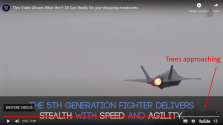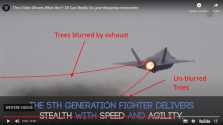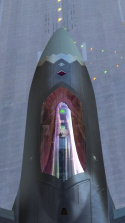Watch that instant when the F-35 climbs that I've timestamped. It let out a cloud of smoke. The rest of the video is uninteresting and tasteless like the rest of the garbage on YT.For the F-135 the smoke is barely noticeable even when panned
You are using an out of date browser. It may not display this or other websites correctly.
You should upgrade or use an alternative browser.
You should upgrade or use an alternative browser.
J-20 5th Generation Fighter VII
- Thread starter siegecrossbow
- Start date
- Status
- Not open for further replies.
My opinion is that as long as the smoke is not persistent and dark as in the case of early RD-33 engines, this is just a cosmetic issue. In the case of J-79 and RD-33 it actually compromised the fighter’s performance by making the aircraft visually visible from a long range. By the time you can see the smoke from WS-10 series, you are well within 1 to 5KM anyway.
My opinion is that as long as the smoke is not persistent and dark as in the case of early RD-33 engines, this is just a cosmetic issue. In the case of J-79 and RD-33 it actually compromised the fighter’s performance by making the aircraft visually visible from a long range. By the time you can see the smoke from WS-10 series, you are well within 1 to 5KM anyway.
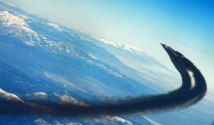
At least it's not like a B-52...
lcloo
Major
LOL!, the black smoke is most likely the result of water injection into the engine. This is to boast the engine thrust, help by expanded mass of water vapour ejcted by the engine, commonly used in B-52 bombers during take-off. Other aircraft also used this technique.View attachment 77079
At least it's not like a B-52...
KC-135
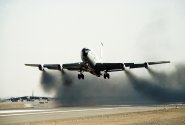
Last edited:
How does injecting water into an engine boost its thrust?LOL!, the black smoke is most likely the result of water injection into the engine. This is to boast the engine thrust, commonly used in B-52 bombers during take-off.
FriedRiceNSpice
Major
Cools down the engine, allowing it to run at higher RPM. Also increases mass of the exhaust which means increased thrust.How does injecting water into an engine boost its thrust?
lcloo
Major
"Water injection has been used in both reciprocating and . When used in a turbine engine, the effects are similar, except that normally preventing detonation is not the primary goal. Water is normally injected either at the compressor inlet or in the diffuser just before the combustion chambers. Adding water increases the mass being accelerated out of the engine, increasing thrust and it also serves to cool the turbines. Since temperature is normally the limiting factor in turbine engine performance at low altitudes, the cooling effect lets the engine run at higher RPM with more fuel injected and more thrust created without overheating. The drawback of the system is that injecting water quenches the flame in the combustion chambers somewhat, as there is no way to cool the engine parts without also cooling the flame. This leads to unburned fuel out the exhaust and a characteristic trail of black smoke."How does injecting water into an engine boost its thrust?
Is it? I always love an excuse to bust out my F-35 smoke farts video:
Look closer: the F-35 is actually flying past trees in the background, which are blurred by the distortion of the hot exhaust. There's no smoke fart whatsoever, as siegecrossbow says modern engines only emit visible smoke trails during quick throttle transients (though not necessarily involving afterburner). No change of throttle setting here though, the engine is in full afterburner throughout the scene.
The RD-33 is pretty much the last modern engine to produce significant smoke emissions, due to a deliberately very compact combustion chamber. As a result, some incompletely burned fuel (soot) from the primary combustion zone exits before it can be consumed by oxidation with secondary air. Older engines smoked despite huge combustion chambers because their fuel injectors poorly atomized the fuel. Or they used water injection to increase thrust on take-off, which increased the amount of unburnt fuel that survived to be exhausted through the nozzle.
Attachments
Regarding water injection, describing the effect as cooling is a bit of a misnomer unless it's injected into the compressor. The engine does not actually run any cooler, it is still pushed hard against the limits in order to get maximum thrust. There is a certain amount of added thrust from the mass flow increase, but it's generally minor. Water is simply too heavy to carry along a supply sufficient for adding a significant fraction of mass flow for a useful length of time! The main benefit comes from the very high heat capacity of water vapour, which enables higher thrust at the same temperature - it's the change in gas properties that matters.
- Status
- Not open for further replies.

